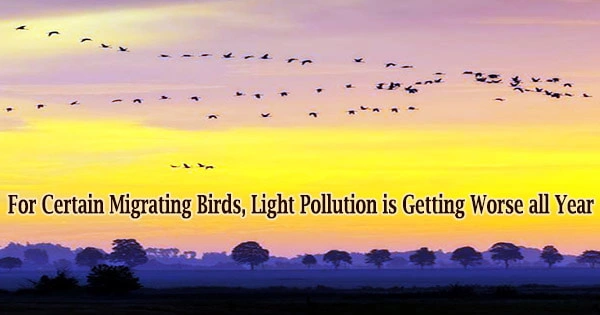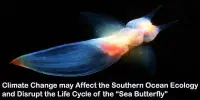The southeastern United States, Mexico, and Central America have the highest levels of nighttime light pollution, according to results based on year-round data collected throughout the Western Hemisphere over the last two decades.
This is a major worry for birds that migrate at night during the spring and fall seasons, as well as non-migratory seasons. Ecosphere published the findings of a study conducted by the Cornell Lab of Ornithology and Colorado State University.
“The southeastern United States, Mexico, and especially Central America are important migration corridors,” said lead author Frank La Sorte at the Cornell Lab.
“Evidence that nocturnally migrating birds are encountering increasing light pollution levels within these regions is concerning. Birds largely avoid light during the breeding and non-breeding season. During migration, however, these associations break down as birds travel across a wide range of habitats, including populated areas that contain higher light pollution levels.”
Light pollution, or the excessive or inappropriate use of artificial light in the outdoors, has a negative impact on human health, wildlife behavior, and our ability to see stars and other celestial objects. During migration, light attracts and disorients birds, resulting in injury and death from collisions with buildings.
The scientists discovered that light pollution levels have increased over around 16 percent of the Western Hemisphere’s land area in the last two decades, while light pollution levels have decreased over another 7% of land area.
Large swaths of North America, Europe, the Middle East, and Asia are bathed in light, with only the most remote parts of the planet (Siberia, the Sahara, and the Amazon) remaining in complete darkness. Singapore, Qatar, and Kuwait are among the world’s most light-polluted countries.
Evidence that nocturnally migrating birds are encountering increasing light pollution levels within these regions is concerning. Birds largely avoid light during the breeding and non-breeding season. During migration, however, these associations break down as birds travel across a wide range of habitats, including populated areas that contain higher light pollution levels.
Frank La Sorte
Light pollution declines are concentrated in the northeastern United States, coinciding with population declines and urban deterioration in major cities (map). The researchers used eBird data to construct weekly estimates of relative abundance for the 42 species in the study.
eBird is a citizen-science program run by Cornell Lab that allows volunteer bird watchers to submit observations from anywhere in the globe. The researchers combined the weekly abundance estimates with satellite-based year-round light pollution measurements gathered over a 22-year period.
More over 80% of the world’s population, as well as 99 percent of Americans and Europeans, lives under the influence of the sun. Although it may appear attractive, sky glow created by human activity is one of the most common sources of light pollution.
All 42 bird species evaluated by scientists occurred in areas with rising levels of light pollution. The greatest increases were seen during migration, particularly for birds migrating through Central America. Birds that spend the summer mating season in the northern United States saw the smallest increases.
“Reversing light pollution trends in Central America, especially during the spring, and launching Lights Out programs during intense migration periods could save a substantial number of migrating birds,” added study co-author Kyle Horton at Colorado State University.
“Reversing light pollution trends in the southeastern United States during the summer breeding season and in Central America during the winter non-breeding season would generate the greatest benefits outside of migration periods.”
It is hoped that by knowing where and when birds are most likely to meet existing or increasing light pollution, more effective measures to reduce dangers and promote bird survival would be made.
















